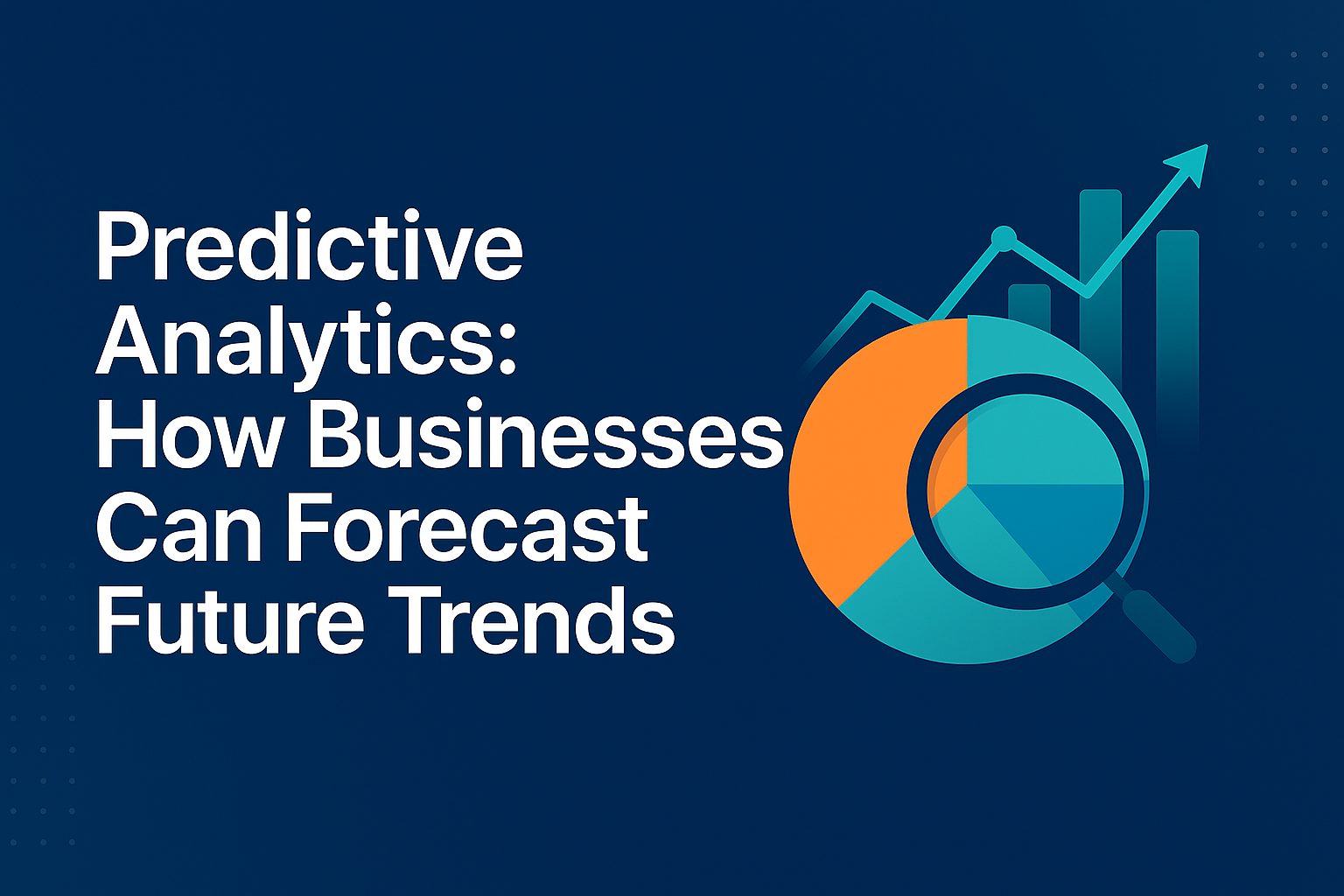In today’s fast-moving business landscape, staying ahead of market shifts is crucial for maintaining a competitive edge. Predictive analytics empowers companies to anticipate trends, optimize strategies, and make data-driven decisions before changes fully materialize.
This article explores how predictive analytics works, the tools businesses use, and real-world applications that demonstrate its impact.
What Is Predictive Analytics?
Predictive analytics uses historical data, statistical algorithms, and machine learning techniques to forecast future outcomes. Unlike descriptive analytics (which explains what happened) or diagnostic analytics (which explains why it happened), predictive analytics answers:
-
What is likely to happen next?
-
When and where will it occur?
-
How can we prepare for it?
According to a report by Grand View Research, the global predictive analytics market is expected to grow at a 21.9% CAGR from 2023 to 2030, driven by demand in finance, healthcare, and retail.
Key Techniques in Predictive Analytics
1. Machine Learning & AI
Machine learning models analyze vast datasets to detect patterns and make predictions. Supervised learning (using labeled data) and unsupervised learning (finding hidden patterns) are commonly used.
Example:
-
Netflix uses machine learning to predict user preferences and recommend content, increasing engagement.
2. Regression Analysis
This statistical method examines relationships between variables to forecast trends. Linear and logistic regression are widely used in sales forecasting and risk assessment.
Example:
-
Retailers like Walmart use regression models to predict inventory demand based on seasonal trends.
3. Time Series Forecasting
This technique analyzes data points collected over time (e.g., monthly sales) to predict future values. ARIMA (AutoRegressive Integrated Moving Average) and exponential smoothing are popular methods.
Example:
-
Uber uses time series forecasting to predict ride demand and adjust pricing dynamically.
4. Decision Trees & Random Forests
These models classify data into categories to predict outcomes, useful in customer segmentation and fraud detection.
Example:
-
Banks use decision trees to assess credit risk by analyzing borrower history.
Top Predictive Analytics Tools for Businesses
| Tool | Best For | Link |
|---|---|---|
| IBM SPSS | Advanced statistical analysis | IBM SPSS |
| SAS Predictive Analytics | Enterprise-level forecasting | SAS |
| Google Cloud AI | AI-driven predictions | Google Cloud |
| Microsoft Azure Machine Learning | Scalable ML models | Azure ML |
| Tableau | Data visualization & forecasting | Tableau |
| RapidMiner | No-code predictive modeling | RapidMiner |
Real-World Applications of Predictive Analytics
1. Retail & E-Commerce
-
Demand Forecasting: Amazon uses predictive analytics to optimize inventory and reduce delivery times.
-
Personalized Marketing:Starbucks leverages AI to recommend drinks via its mobile app, boosting sales.
2. Finance & Banking
-
Fraud Detection: PayPal analyzes transaction patterns in real time to prevent fraud.
-
Credit Scoring: FICO scores use predictive models to assess borrower risk.
3. Healthcare
-
Disease Prediction: Hospitals use predictive models to identify high-risk patients and prevent readmissions.
-
Drug Development: AI helps pharmaceutical companies predict drug efficacy.
4. Manufacturing & Supply Chain
-
Predictive Maintenance: Siemens uses IoT sensors and analytics to predict equipment failures before they happen.
-
Supply Chain Optimization:Coca-Cola forecasts regional demand to minimize stockouts.
Challenges & Ethical Considerations
While predictive analytics offers immense value, businesses must address:
-
Data Quality: Garbage in, garbage out—poor data leads to inaccurate predictions.
-
Bias in AI: Models trained on biased data can reinforce discrimination.
-
Privacy Concerns: Regulations like GDPR require transparent data usage.
A study by MIT Sloan highlights how unchecked AI bias can harm decision-making.
Conclusion: The Future of Predictive Analytics
Predictive analytics is no longer a luxury—it’s a necessity for businesses that want to thrive in uncertain markets. By leveraging machine learning, statistical modeling, and real-time data, companies can:
✅ Anticipate customer needs
✅ Reduce operational risks
✅ Optimize marketing & sales strategies
As AI and big data evolve, predictive analytics will become even more accurate and accessible. Businesses that adopt these tools early will lead their industries in innovation and efficiency.
Want to implement predictive analytics in your business? Start by auditing your data quality and exploring tools like Google Cloud AI or RapidMiner.
Would you like a deeper dive into any specific use case or tool mentioned? Let us know in the comments!

Data-driven editor at CliqSpot, transforming raw analytics into actionable growth strategies for modern businesses.

Leave a Reply